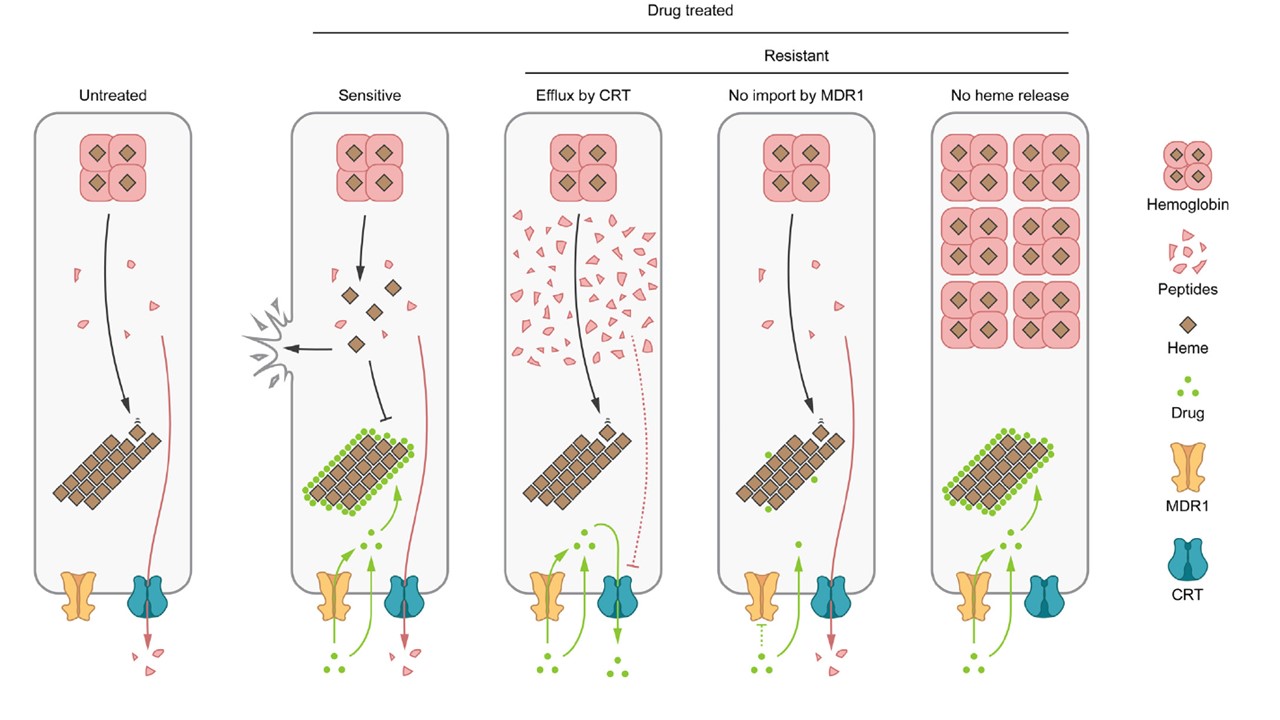Mechanisms of parasite resistance towards hemozoin-targeted antimalarials. Shown are the physiological processes in the digestive vacuole and the
mechanisms of resistance towards hemozoin-targeted antimalarials. In untreated wild-type parasites, hemoglobin-derived peptides are exported by the chloroquine resistance transporter (CRT) and released heme crystallizes to hemozoin (column 1). Drug-sensitive parasites accumulate hemozoin-targeted compounds through multidrug resistance protein 1 (MDR1)-mediated import and through transmembrane diffusion and weak base trapping. The drugs associate with hemozoin and prevent adsorption of free heme, which in turn damages proteins and membranes (column 2). Mutations of CRT which stimulate drug efflux mediate resistance but impair export of globin-derived peptides (column 3). Mutations of MDR1 mediate resistance by limiting active drug import (column 4). By preventing the release of heme, for example, by inhibiting hemoglobin delivery or catabolism, oxidative damage is averted despite accumulation and adsorption of the drug. Matz JM. Plasmodium's bottomless pit: properties and functions of the malaria parasite's digestive vacuole. Trends Parasitol. 2022 38(7):525-543. PMID: 35317985.
